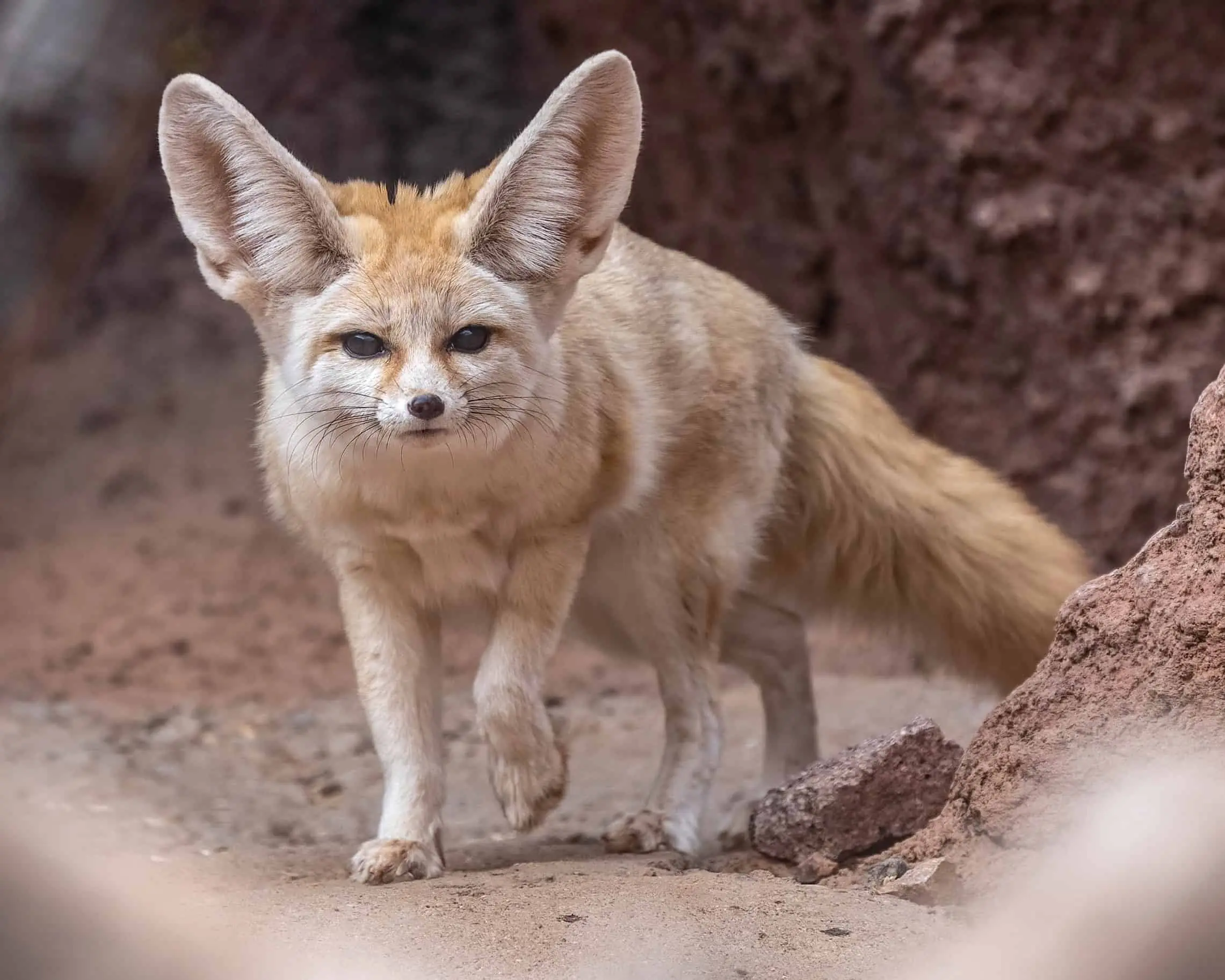Top Facts About Fennec Foxes
How does a creature no bigger than a house cat survive the searing heat and arid expanse of the Sahara Desert? The fennec fox, a marvel of adaptation, thrives in this unforgiving landscape, showcasing nature's ingenuity at its finest.
The fennec fox, scientifically classified as Vulpes zerda, is the smallest canid in the world, yet its outsized ears, measuring up to six inches, are its most striking feature. These remarkable appendages arent just for show; they serve a crucial purpose in the foxs survival. Acting as highly efficient radiators, the large surface area of the ears dissipates excess body heat, preventing overheating during the scorching desert days. These same ears also grant the fennec incredibly acute hearing, allowing it to detect the slightest rustle of prey moving beneath the sand. This remarkable auditory prowess enables them to locate insects, rodents, lizards, and even eggs hidden beneath the surface.
| Common Name | Fennec Fox |
| Scientific Name | Vulpes zerda |
| Family | Canidae |
| Distribution | North Africa (Sahara Desert, Sinai Peninsula, Arabian Peninsula) |
| Habitat | Sandy deserts and arid regions |
| Diet | Omnivorous (insects, rodents, lizards, birds, eggs, fruits, plants) |
| Size | 9-16 inches (body length), excluding tail |
| Weight | 1.5-3.3 lbs |
| Lifespan | Up to 10 years in the wild, up to 14 years in captivity |
| Conservation Status | Least Concern |
| Reference | National Geographic - Fennec Fox |
Beyond its remarkable ears, the fennec fox boasts a suite of adaptations that enable it to thrive in its harsh environment. Its thick, sandy-colored fur provides excellent camouflage against the desert backdrop, while also offering insulation against both heat and cold. The fur on the paws is particularly thick, acting like built-in snowshoes to prevent sinking into the soft sand and protecting them from the scorching ground. Their nocturnal lifestyle further shields them from the intense daytime heat, with the cooler night air providing respite. They emerge from their burrows, often elaborate underground networks dug deep into the sand, as the sun begins to set, their large eyes, adapted for low-light conditions, gleaming in the twilight.
Fennec foxes are highly social animals, living in family groups of up to ten individuals. These groups, typically consisting of a mated pair and their offspring, work together to hunt, raise young, and defend their territory. Communication within the group is complex, incorporating a range of vocalizations, including barks, howls, and purrs, alongside intricate body language. Their social structure contributes significantly to their survival, fostering cooperation and shared responsibility in the challenging desert environment.
While fennec foxes are primarily insectivores, they are opportunistic omnivores, supplementing their diet with fruits, leaves, and any other edible morsels they can find. Their ability to derive moisture from their food is essential for survival in the arid landscape. Their kidneys are specially adapted to minimize water loss, further enhancing their ability to survive with limited water resources. They have been observed to cache food, burying it in the sand for later consumption, a prudent strategy in an environment where resources can be scarce.
Despite their remarkable adaptations, fennec foxes face increasing threats. Habitat loss due to human encroachment and desertification is a growing concern, shrinking their natural range. They are also hunted for their fur and captured for the illegal pet trade, which further exacerbates their vulnerability. Conservation efforts are crucial to ensuring the continued survival of these fascinating desert dwellers.
The fennec fox exemplifies the incredible resilience and adaptability of life on Earth. Its intricate interplay of physical adaptations and behavioral strategies allows it to not just survive, but thrive in one of the most challenging environments on our planet. Their story is a testament to the power of evolution and the importance of conservation in preserving the biodiversity of our world. From their remarkable hearing to their water-conserving kidneys, the fennec fox embodies the spirit of the desert, a true testament to the ingenuity of nature.
The swiftness and agility of the fennec fox, capable of running up to 20 miles per hour and leaping impressive distances, allows it to capture prey and evade predators with equal finesse. These remarkable physical capabilities, combined with their keen senses and social intelligence, make the fennec fox a true marvel of the desert world. As we delve deeper into the intricacies of their lives, we uncover a story of resilience, adaptation, and the delicate balance of life in the Sahara.
Their burrowing behavior also plays a crucial role in thermoregulation, offering a cool refuge from the scorching daytime heat and a warmer shelter during the chilly desert nights. The intricate network of tunnels provides a stable microclimate, buffering against the extreme temperature fluctuations of the desert environment. This subterranean sanctuary also protects them from sandstorms, offering a safe haven from the powerful winds that can sweep across the landscape.
/fennec-fox-01-f56044b427f64d64a263417db3c23a13.jpg)

